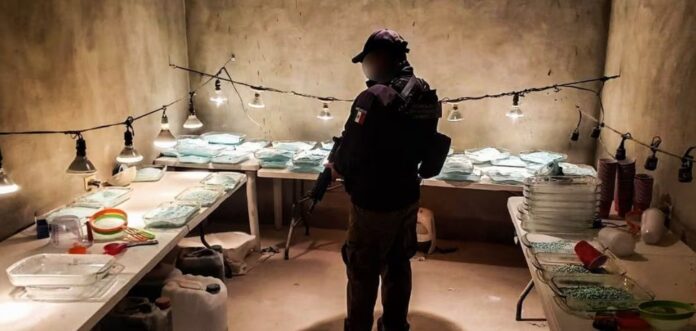Human trafficking and smuggling, financial fraud, drug sales, piracy trade and extortion. In a global list of “criminal markets” made up of 193 countries, Mexico comes out on top, exposing the extent that criminal groups have in the second largest economy in Latin America. According to the Global Initiative against Transnational Organized Crime (GI-TOC), the organization in charge of the published index, the upward trends in Mexico are very worrying.
The non-profit organization recently published its Global Organized Crime Index, a biennial study that combines hundreds of indicators to rank the countries that suffer the most from crime. In this index, Myanmar, Colombia and Mexico occupy the top three places, in that order. They are followed by Paraguay and the Democratic Republic of the Congo.
A sub-index within its report focuses on the “criminal markets” and their penetration into the economies. In this, Mexico takes the crown, driven by the high incidence of illegal charges for protection, human trafficking, cocaine and synthetic drug trade. “What is evolving for the worse in terms of violence are two trends, the issue of extortion through the collection of floor … and the criminalization in very strong industries such as agriculture,” says Romain Le Cour Grandmaison, a specialist researcher and one of the authors of the report. “The trends are very worrying,” he adds.
Transporters, who are now targets of organized crime and whose murders have increased in recent years, have been the ones who have complained the most about the criminal markets, Le Cour Grandmaison explains. “It is not possible to escape the criminal pressure in the transport activity, and this is part of the very strong penetration that exists in the economy based on charging for protection. That is, if you do not obey something will happen to you, better pay,” says the specialist.
Despite the fact that organized crime has gotten into many productive activities in Mexico, drug trafficking continues to be a high-incidence indicator, according to the GI-TOC report. “Along with the expansion of the cocaine market in the Americas, there has been a significant increase in the synthetic drug trade,” the text reads. “North America is the third most affected region in the world in this regard. Within the continent, Mexico seems the most affected by this market.” In 2022, the country stood out as an important actor in the synthetic drug trade and witnessed an increase in the popularity and production of ketamine, methamphetamine and fentanyl, the researchers wrote.
The weapons that empower organized crime come mostly from Mexico’s first trading partner: the United States. According to the report, between 70% and 90% of the pistols that appeared at crime scenes in Mexico came from the US. “Drug cartels get guns in Texas and Arizona and smuggle them across the border,” the report says. “This initial flow sets in motion a chain reaction that turns all Central American countries into transit and destination points for the illegal arms trade and fuels violence and insecurity.”
Although GI-TOC does not make recommendations focused on each of the countries with the highest crime, the organization does refer to the problem of transnational organized crime as a global one. It recommends “facing” it strategically and prioritizing financial crimes, which enable other types of crimes. In addition, the organization asks to focus on the links between crime and corruption.
“Organized crime remains a profound challenge worldwide, posing a danger to both developed and developing countries and being an obstacle to the much-needed cooperation
Source: El Pais







